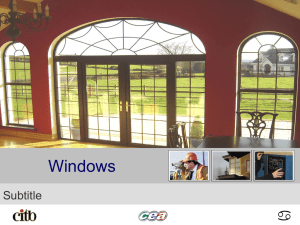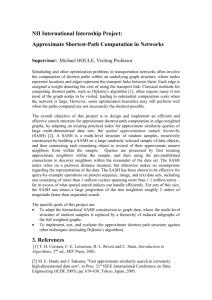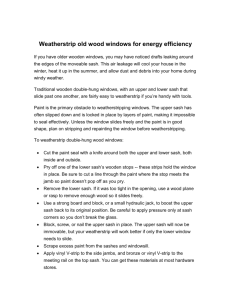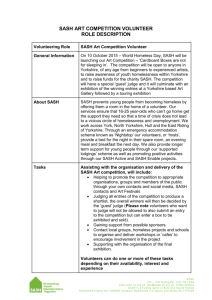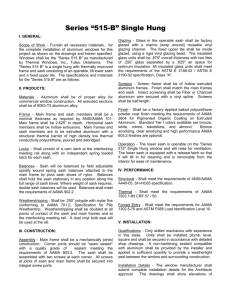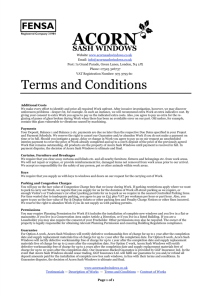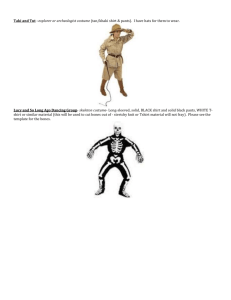A double hung was originally designed as a job site built product
advertisement
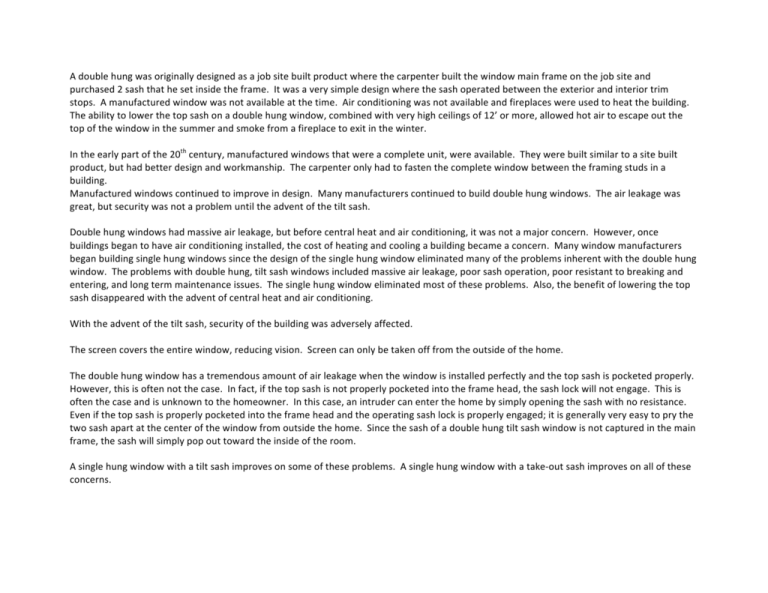
A double hung was originally designed as a job site built product where the carpenter built the window main frame on the job site and purchased 2 sash that he set inside the frame. It was a very simple design where the sash operated between the exterior and interior trim stops. A manufactured window was not available at the time. Air conditioning was not available and fireplaces were used to heat the building. The ability to lower the top sash on a double hung window, combined with very high ceilings of 12’ or more, allowed hot air to escape out the top of the window in the summer and smoke from a fireplace to exit in the winter. In the early part of the 20th century, manufactured windows that were a complete unit, were available. They were built similar to a site built product, but had better design and workmanship. The carpenter only had to fasten the complete window between the framing studs in a building. Manufactured windows continued to improve in design. Many manufacturers continued to build double hung windows. The air leakage was great, but security was not a problem until the advent of the tilt sash. Double hung windows had massive air leakage, but before central heat and air conditioning, it was not a major concern. However, once buildings began to have air conditioning installed, the cost of heating and cooling a building became a concern. Many window manufacturers began building single hung windows since the design of the single hung window eliminated many of the problems inherent with the double hung window. The problems with double hung, tilt sash windows included massive air leakage, poor sash operation, poor resistant to breaking and entering, and long term maintenance issues. The single hung window eliminated most of these problems. Also, the benefit of lowering the top sash disappeared with the advent of central heat and air conditioning. With the advent of the tilt sash, security of the building was adversely affected. The screen covers the entire window, reducing vision. Screen can only be taken off from the outside of the home. The double hung window has a tremendous amount of air leakage when the window is installed perfectly and the top sash is pocketed properly. However, this is often not the case. In fact, if the top sash is not properly pocketed into the frame head, the sash lock will not engage. This is often the case and is unknown to the homeowner. In this case, an intruder can enter the home by simply opening the sash with no resistance. Even if the top sash is properly pocketed into the frame head and the operating sash lock is properly engaged; it is generally very easy to pry the two sash apart at the center of the window from outside the home. Since the sash of a double hung tilt sash window is not captured in the main frame, the sash will simply pop out toward the inside of the room. A single hung window with a tilt sash improves on some of these problems. A single hung window with a take-­‐out sash improves on all of these concerns. DESCRIPTION SINGLE HUNG w/take out sash DOUBLE HUNG w/ tilt sash Air leakage Excellent Poor Security Excellent Poor Ease of Operation Excellent Poor Long Term Reliability Excellent Poor Cleaning the Glass by hand Average Very good Cleaning the Glass with spray wand or squeegee outside, by hand inside Very good Very good, but possible water leak problems Ventilation Very good Very good, Excellent, in some instances 1) Our single hung window has a .019 air infiltration rating. The industry standard is .300, which is 15 times as much air infiltration. Since the air leakage is calculated as air leakage per lineal sash foot, and a double hung has 2 operating sash, the double hung window actually has twice the air leakage as it states. Therefore, a double hung window is likely to have 30 (3,000%) times the air infiltration as our single hung window. If a person wants a window for improved energy efficiency, then they do not need to consider a DH. 2) Another major problem with a DH is getting the sash to fully close and interlock. During an air infiltration test in a test lab, the window can be set perfectly in an opening and the sash can be manipulated to close properly. This often is not the case in the real world. Therefore, the air leakage of a DH is even greater than the 30 times. 1. By the way, the reason the NFRC rating does not include air infiltration is because the wood window industry lobbied against it. They convinced the gov’t. that the test would cost too much to include the air infiltration. The truth is that the air infiltration rating is already calculated in all air/water/structural basic tests that are required for all windows. Including the air leakage in the NFRC test would be simple and inexpensive. Since most all wood windows are DH; if air infiltration was included in the energy efficiency, wood windows would not pass any tests. Therefore, the wood window industry had to get the air infiltration out of the energy efficiency test criteria. 3) Structural strength. A SH window has far greater structural strength and should work properly for many years. A DH window is very seldom installed properly and is likely to rack out of square after very little use. Therefore, it’s long term operation is likely to be very poor. Also, a vinyl window needs all the help it can get. A SH configuration gives the vinyl window a lot of structural strength and long term durability. 4) A SH window is far more resistance to forced entry. The 2 sash on a DH window can easily be pried apart. This is far more difficult to do on a SH window. 5) Hardware breakage is a major problem with a DH window which can cause the sash to fall out of the window frame. Replacement hardware is almost impossible to find. A SH window with a take out sash will probably never have a hardware problem. 6) The DH sash often operate poorly. SH sash should continue to operate well for many, many years. 7) Bowed sash parts and bad sight lines are common with DH windows. Our SH window should look great for many years. 8) A DH window is a long term maintenance problem that has massive air infiltration problems. It is nothing more than a “dog and pony” show. A DH window starts out as a poor product that rapidly gets worse with age. Selling points used by firms selling DH windows: 1) Easier to clean a the glass on a window. 1. It is actually much easier to clean the o/s of the window with a circulating brush/washer wand and not remove the sash or screen. 2. When a homeowner tilts the sash in, the result is often a gouged sheetrock or wood return. Some salesmen sell the DH as having easier glass replacement. However, as far as glass replacement goes, replacing a sash is totally impractical. The odds of getting a correctly sized sash is slim and none. Plus product redesigns make a replacement sash obsolete. Also, if by some miracle the replacement sash was the correct size and style, the new vinyl would re
